
Letters: Looking for info about photo
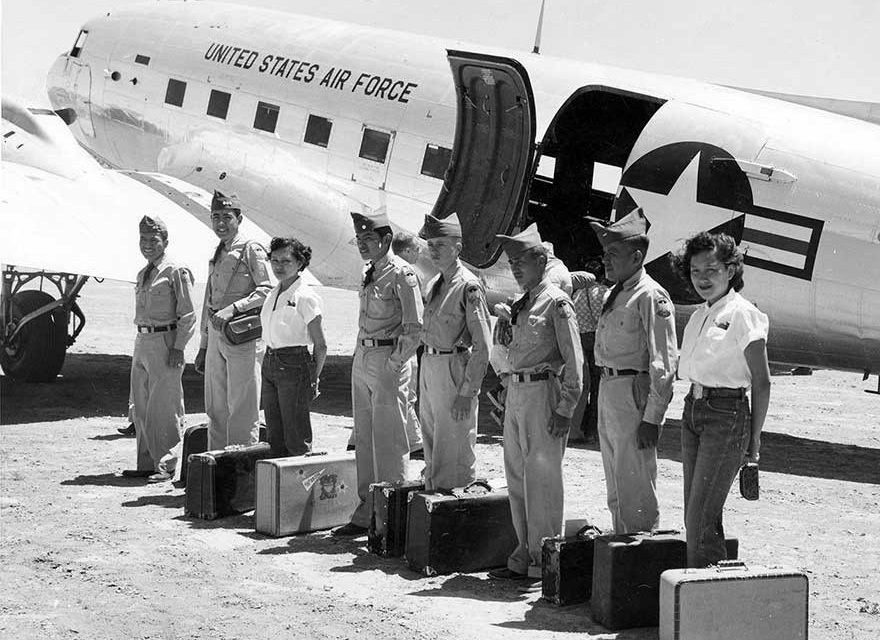
Submitted | Milton Snow, U.S. Indian Service
I am the installation historian here at Nellis Air Force Base (Las Vegas, Nev.) and came across the attached photo while organizing the files. What I know is what is on the back and what I have learned in research. Based on the aircraft and uniforms/clothing, my guess is the mid-1950s as Nellis AFB had an administrative C-47 assigned during that period which may be the tie-in. The names of the young men and women are, left to right, listed as Stanley ______, Herbert Schumann, Katherine Morgan, Freddie Begay, Jimmy Schultz, Raymond Morgan, Eddie Chester and Brenda Morgan.
The photo credit on the back is Milton Snow, U.S. Indian Service, but no date or location. One of my military historian colleagues tells me these are likely Arizona Wing CAP cadets based on the uniforms and the shoulder patch. Mr. Ben Sorrell at the Navajo Nation Museum tells me that they have the bulk of Mr. Snow’s 20-plus year career’s photo collection but no journal or log that might help pin down the date and or location.
I send this to you to ask if you might consider running it in your newspaper (my contact details are below) and/or posting it on the Navajo Times Facebook page. I hope that one or more of the young men and women pictured may still be with us or they have family members or friends who recognize them and can assist in providing a date or location or point me at someone who can help tell me more about the picture.
Many thanks in advance for your time and consideration.
Gerald A. White Jr.
Historian
99 ABW/HO
We are proof of the survival of ceremonies
“We are still Diné without ceremonies” (letters, Jan. 3, 2019) sounds like an admission of defeat, a last call from the last surviving family of Navajo before extinction. But as I read along, the content changed peering through lens of struggles and blame put on someone else. We Navajos are good at that.
If we are to fade away, we have allowed it, and who do we blame? A response is hard to begin when a personal bias is made against one’s own people. Imagine, facing four to five years of unbearable cold in rags, angry, freezing in arms of loved ones, destitute, walking around and sleeping with the smell of death is beyond endurance.
The article made me reflect on our traditional prayers of Naghaají (to face any “challenge” in life) is still practiced — a protection prayer our foremothers and fathers offered for themselves and future generation when they were released. There was never a thought about being “too late!” and doubts as to “Why are we now trying to save ceremonies?” They were never confused about who they were or second-guessed their belief when impacted with so much pain, putting their heart and soul into the power of prayer to raise above every known trial and tribulation life throws at them.
I believe that describes our people making a comeback based on ceremonies. We are proof as an answer to their protection prayer, or, we would have been wiped out a long time ago. Yes, our people at Fort Sumner experienced dehumanization and unthinkable suffering from another group of people that did such a thing to our ancestors.
Áhálaaneeh — a worthy praise to have survived an inhuman ordeal, their souls hanging halfway into the grave, and escaped the hand of death. Our foremothers and fathers who experienced the trauma rightfully call Fort Sumner Jiidíítsó bilhása’ (“where big ghost dwells”). It is not a place to re-visit time and time again. We only need to remember. Even that is painful enough, and the protection prayer is meant for us to keep moving forward to the future.
“We should have started to preserve these ways since the signing of the treaty (or) made a part of the treaty.” True, not everything was thought of in time of need by our ancestors, but with what little remains, the practice of traditional ceremonies we hang onto has given us recovery, rehabilitation and full awareness have regained our true identity again as exactly intended in our foremothers and fathers protection prayers.
They knew there is room for renewing agreement with K’é whenever human relation is involved, and relied upon the intelligence of future generation to help themselves because there is such a thing as negotiations, and even contingences can be agreed upon, and we are at that point to do something about it.
And, “Our Navajo spiritual beliefs are no longer for many Navajos,” is fictitious. There is a difference between a “spiritual” and “religious person.” If an examination is to be made, it can be too much of a “stirred up issue” for one.
Tribal ceremonies makes us who we are and I believe every traditional practitioner felt infringed upon if our young generation are allowed to succumb to the ills of society. As for “assimilation,” we are taught to look at it one way — genocide. Loss of identity covers all our historical cultural institution if we allow it.
This is not the only way. For one, “acculturation” is another way. Young highly educated Navajos return home, break away for short periods, take time off or vacations and schedule ceremonies to renew their faith with traditional teaching not to forget our philosophy and way of life.
I personally have observed this happening more and more. They take the best values from our culture, align with the most helpful morals and principle to be successful in their chosen professions integrated with the outside world in how to succeed. It is true we are subjected to change and can be controllable.
The “Baby Boomers” are the bilingual generation of educators, realized from their experience something was missing. They have inspired the now generation to pursue traditional and modern knowledge with a better understanding of two worlds as one. They have introduced the enlightenment of Navajo culture through additional curriculum in Navajo language and traditional philosophy they almost lost. Kudos to them.
Teddy Begay
Kayenta, Ariz.
Why doesn’t worker have a team?
Dear Navajo Nation President-elect/Vice President-elect, Twice have I read the Dec. 20, 2018, Navajo Times article concerning the (incoming) Rhino Health “glove” manufacturing plant in Church Rock, New Mexico. Never has mau’ been the sharpest tool in the shed, but flummoxed is mau’ by the following quote, made by Sharlene Begaye-Platero, who “got the ball rolling” for the project: “It’s a lot of work to put a project together on Navajo,” she said. “I don’t have a team — it’s just me, myself and I. And I hope the Navajo Nation Council supports this project. And that they know this could be one of many that could happen on our reservation.”
Questions: Why doesn’t she “have a team?” Why is it just her? Why does she express “hope” that the Navajo Nation Council is supportive? Shouldn’t support be a given? Ms. Begaye-Platero “hopes” that the (25-member) Navajo Nation Council knows that Rhino Health could be the first of many to come “to our reservation.”
Incredible that even one Navajo would “hope” that their governing body is on the same (job growth) economic page as them. “Navajo Nation doesn’t know the good assets that it has,” said Rhino Health CEO, Mark Lee. Which begs one last question: Will the Navajo Nation’s youngest ever president, with a supremely “definitive” (election) mandate, take Lee’s assertion (hint) to heart that Navajo Nation can be/should be way more powerful?
Jerry Sanchez Sr.
Redding, Calif.
Am I grounded enough for Nez-Lizer?
You have heard the common-sense adage: “Take time, do it right the first time.” Well, I did not take time to read the Jan. 3 issue of the Navajo Times until after I made a quick trip to Window Rock (165 miles each way on icy roads) on Jan. 4 to hand-deliver a copy of my curriculum vitae to the office of the incoming president of the Dineh Nation.
The president was not in his office so I left my CV with Dr. James J. Davis Jr., Ph.D. (political science), executive staff assistant. When I got home, I went to bed early as I had worked on my CV until midnight and then getting up at 6 a.m. to get to the president’s office before noon. Finally, this morning, I had the chance to read two articles in the newspaper. Daah – Diigis!
So, kindly consider publishing my analyses of portions of the two articles: 1) “Efficiency: Team is going over job applications” and 2) “Nez, Lizer urge innovation, efficiency.” In the first article I learned that over 150 applications have been submitted by “experienced candidates.” So am I “only” candidate No. 151 because I had missed some sort of deadline?
The “Efficiency” article was all about educated and experienced candidates. Right On! My CV tells it all. Is a Ph.D. in science education enough? Does a “professor emeritus” status (retirement) for 12 years speak for enough past experience? I have never served in Dineh Nation government — so no experience? Are we talking about a “same-O, same-O career politician” who speaks only broken-English and has a boarding school certificate? Note: I am not putting down such-endowed individuals as both my mother and late father possess(ed) such limitations afforded by a few short years of boarding school education.
In addition to having no chapter house experience, I can see where I can be disqualified because I live 27 miles outside the Rez line (Leupp Road) even though I ran as a presidential candidate in 1990? So why would Title Two permit a former two-term president to run again in 2018? In 1988 when Title Two was passed I went to the Office of the Speaker of the Council and confronted Mr. Nelson Gorman and asked him, “Mr. Gorman, Title Two makes you the highest-governmental official in the Dineh Nation government — and the Dineh electorate had nothing to do with it apart from electing you to represent the Chinle district as a delegate? Is that correct?”
Mr. Gorman did not give an answer as he kept looking downward — so I left knowing that I was correct. I knew he and all the Dineh Nation delegates were afraid to have to confront the potentiality of a newly designed Dineh Nation constitution, which would have Dineh Nation electorate approval about the “governing endowment of an elected Dineh Nation president.” Still, today, no Dineh Nation constitution in place so the Dineh Nation Council still conducts standard Dineh Nation business via “helter (passing a resolution before lunchtime) – skelter (rescinding the pre-lunch helter esolution) resolutions (HSRs).”
At present, the Dineh Nation does not have an established game plan. Title Two does not represent a permanently endowed mode of operation. On the second article about the Nez-Lizer Team urging innovation and efficiency and “quality of groundedness,” I would answer their question on groundedness with the following: From the years 1944-1950 I lived in a small hogan with three mothers: mother, grandmother, and great-grandma who as a 6-year-old was captured by Kit Carson’s men and made to walk 600 miles to/from Hweldi in eastern New Mexico territory.
After his return from the Marines, as a trained code talker, my father served as a medicine man. On many occasions, I accompanied him to his “sings” on Black Mesa and surrounding regions. I herded sheep many summers and attended a few squaw dances with Grandma.
I started the high school cross-country running program on the Dineh Rez in fall 1968. I received a Navajo tribal scholarship for four years and then served in Rez schools for four years. Finally, I was a Navajo Nation doctoral fellow for three years.
Am I grounded enough and a valid go-getter to serve in some capacity in the Nez-Lizer Dineh administration come Jan. 15, 2019? No Title Two-based put-downs, please.
Tacheeni Scott
Flagstaff, Ariz.
Why aren’t leaders concerned about human trafficking?
Happy New Year to members of the Navajo Nation in general and all my relatives and friends in particular. I wish each and everyone many blessings to come your way in 2019. I would like to give the newly elected tribal leaders a wakeup call and touch up on a very serious matter that impacts our daily lives.
Human trafficking is a rapidly increasing problem around the globe and it’s among us on Navajo land and I’m wondering if our elected tribal leaders are aware of it. I’ve yet to hear from our tribal leaders what their positions are on this matter as it pertains to our own people that went missing and have not been found as of today.
A young Navajo girl went missing about 15 years ago in the Four Corners region and another elderly lady went for a walk in the Shiprock area this past summer and never made it home. Abduction is suspected and possible. A group of concerned people teamed up to comb every part of Shiprock, the home community of the current president, and came up empty handed.
I feel the president should have taken proactive steps and at the very least he should have given a lending hand to the family. Instead, he was too busy moving one step forward to establishing his new corporation and taking two steps back in helping the family. What’s happening? And why aren’t the tribal leaders concerned about the human trafficking problem?
I listened throughout the campaign season and never heard any candidates mention that human trafficking was becoming a problem. It’s heartbreaking that they’re not concerned about it. In the meantime families who are victimized of possible abductions are devastated. It seems like anytime someone goes missing on the outside it makes national news and not our own people. You see the missing person flyers posted in the business outlets.
Why not our people? It’s totally sad and unfair to see nothing is being done. Personally, I suspect the drug traffickers and truck drivers for big companies are the ones to blame. I always thought the Navajo Nation should have inspection stations at every single entrance to the reservation so the traffickers and big rig drivers are searched, apprehended and convicted.
The time has arrived for our tribal leaders to establish a missing person network much like the Amber Alert that was recently funded. If they can appropriate $2.5 million for Naat’aannii Development Corporation, to benefit the sore losers (ma’iis) in the primary election, why can’t the Council appropriate funds to establish a missing person network? Even better, why not fund toll stations to serve dual purpose by charging entrance fees to travelers, tour buses and the trucking industry and at the same time perform inspection? It might be the best thing the tribal Council could ever do.
The state tourism will frown and feel the impact.
In light of the above, thank you for allowing me the opportunity to be heard on this very important matter and other related issues of concern.
Vern Charleston
Farmington, N.M.
No restaurants offer traditional foods
Good morning, I am writing this with a heavy heart and with hope that those who have chosen to lead and educate future generations will receive this warning and suggestion and give it due consideration. I’m only half Navajo from my father’s side. That being established, I have spent time on The Big Rez watching sheep, or at least watching our dogs watch the sheep. My father was of the World War II generation, sent to a Mormon boarding school in the 1930s. He served in the Marine Corps, initially sent to the code talkers, but did not speak Navajo, so infantry.
I am a modern person raised to be “American” by him, but in this case I feel I need to speak. I watched a program on TV yesterday, Jaime’s American Roadtrip, where he visited the Big Rez. He met with many people during his visit, I believe in 2009, and during the show ate many foods I have not even heard of since I was a kid.
The show also brought to my attention the lack of Navajo food culture, not only on the Big Rez, but in surrounding communities off the Rez. I never realized that there are no Navajo restaurants in Gallup, or Flagstaff, or anywhere outside of the Four Mountains, to include on the Rez that offer traditional Diné foods. Never even crossed my mind. Why is this? As a veteran, in 21 years, I traveled across the globe to Europe, Asia, South Asia, Middle East and Central America. In my travels I have learned the value of food as not just a cultural ambassador, but as a bringer of peace, understanding, and an opener of the mind as well as the stomach.
You want to teach a language? Food is a great start, in the kitchen or at the table. Think of this for a minute, how many Diné now call frybread, tortillas? Never when I was a kid. This is the result of the mutual cultural sharing and acceptance of the sharer to the shared using a foreign language now to describe a food that has been described in Native tongue as something else for centuries.
Foods also specifically define a culture, even if the direct connection to the background is lost, the food by name or oral tradition can be traced to its roots, while being shared with those people not of a similar background, and a story is told. I will not speak here to the specific health benefits involved as I think Western medicine, and probably Diné medicine, have already proved that traditional diets are more beneficial for total health and well being, it is an integral part of the harmony and balance of nature.
So how do we decrease diabetes, obesity and other foodborne illnesses among the Diné and share that, along with Diné culture with others? Build more Taco Bells on the Rez? No. Even the cafeteria at Diné College follows an “American” food menu. To this, I also say no. You all hold the keys, as traditional leaders and educators, and healers.
To begin a healing process, one must first look at what is ingested everyday. What you put in is what comes out. My recommendation is this: Diné College should begin a Traditional Diné (Navajo) Culinary Arts degree program with a minor in business or restaurant management.
The idea here is to give young Diné the foundation skills to open and manage their own restaurants with a total focus on Diné cuisine from preparation to plating. If they so chose to move on to advance education, then the cultural culinary foundation of their Diné heritage would be established and reflected in their culinary art presentations throughout their careers. My second recommendation would be that you, all as individuals, should seriously promote any Diné people looking to open a cafeteria-style restaurant to start with in Gallup.
Expansion could come later to promote Diné culture and traditional food. Invest in our people to empower our people. Reach out to those on The Big Rez that have this food knowledge to preserve and expand it. This would create jobs, individual prosperity and a cash flow to help the nation. Sponsor a food truck or trailer, on or off The Rez.
Carry the culture forward and share it through tasty foods no one has ever even conceived of. I thank you all for your time. I hope that my words help and mean something. Still don’t know what my last name means, but apparently, we have strong words to say. God Bless you all and have a Merry Christmas.
Wish I was there with you between the Four Mountains, where we are supposed to be, but I’d have to have an Enemy Way so I don’t want to inconvenience anyone.
Zachary Becenti
San Antonio, Texas
To read the full article, pick up your copy of the Navajo Times at your nearest newsstand Thursday mornings!
Are you a digital subscriber? Read the most recent three weeks of stories by logging in to your online account.

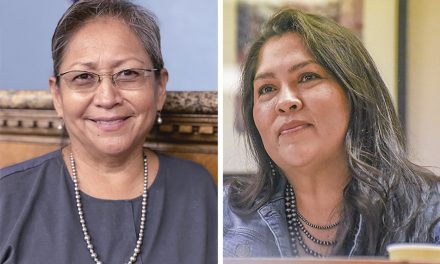
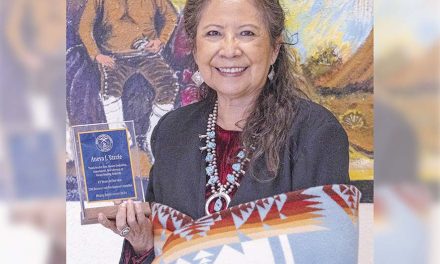

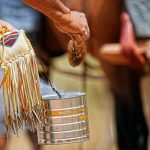
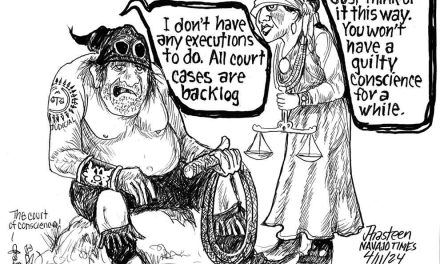

 Highway 264,
Highway 264, I-40, WB @ Winslow
I-40, WB @ Winslow